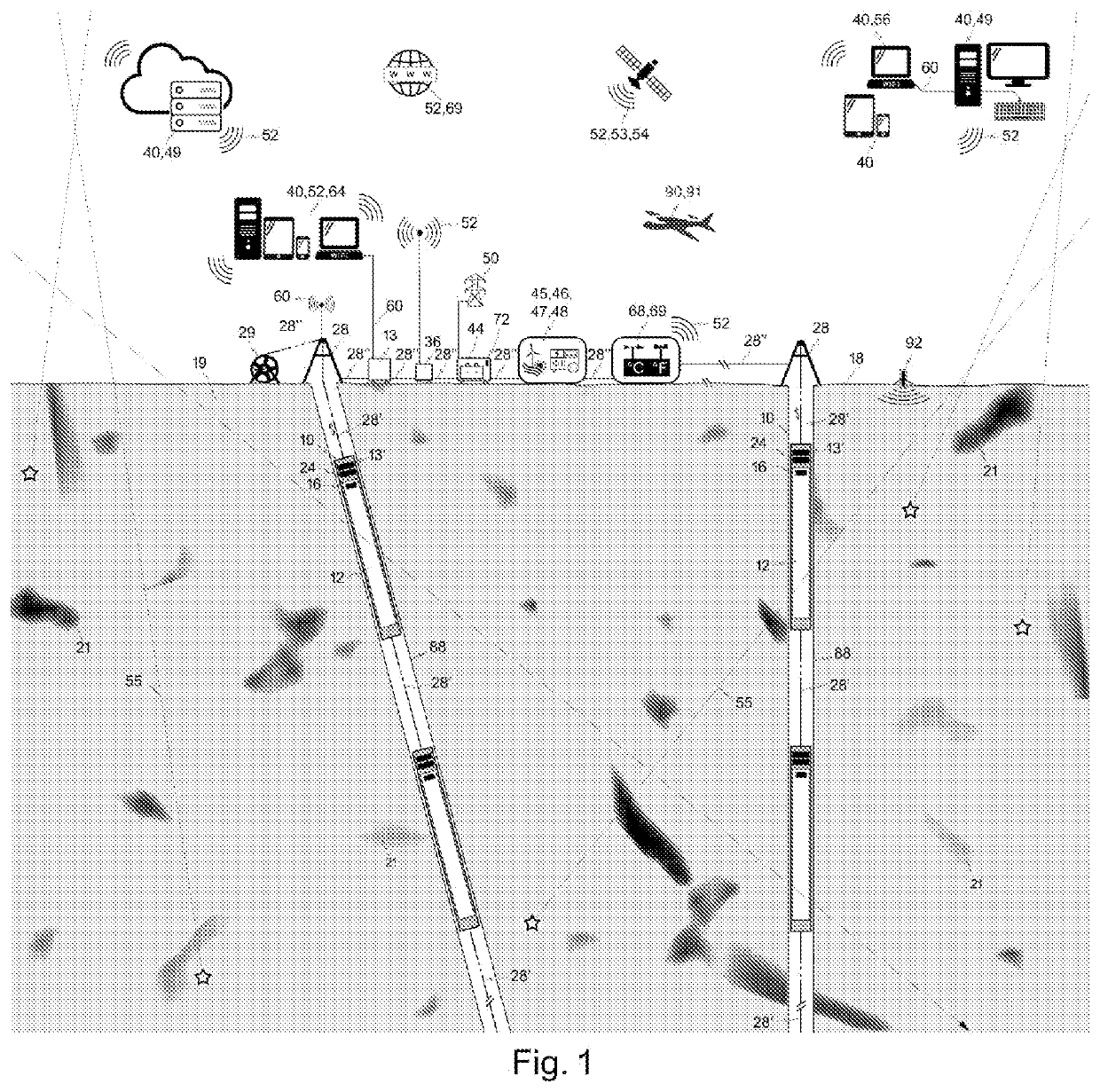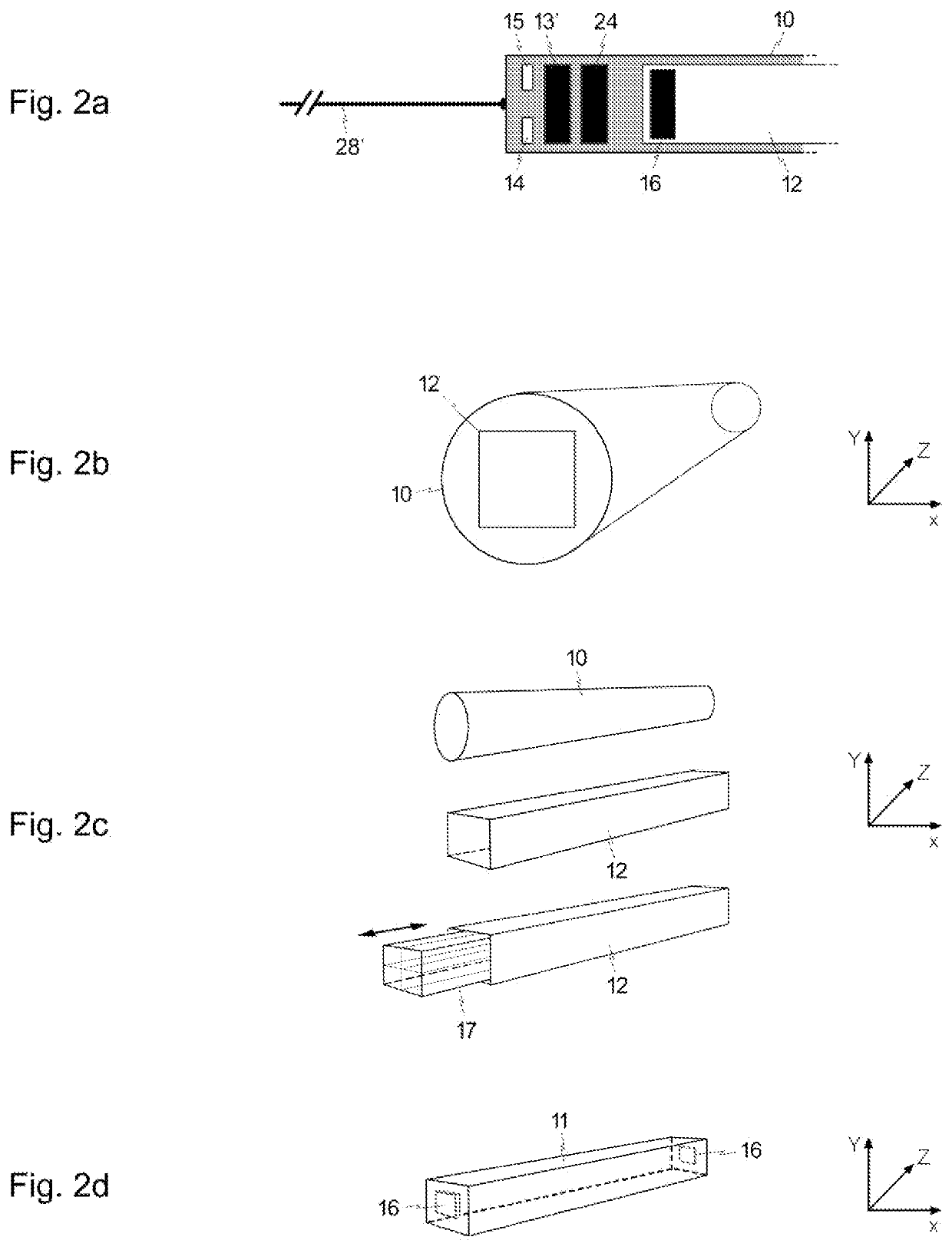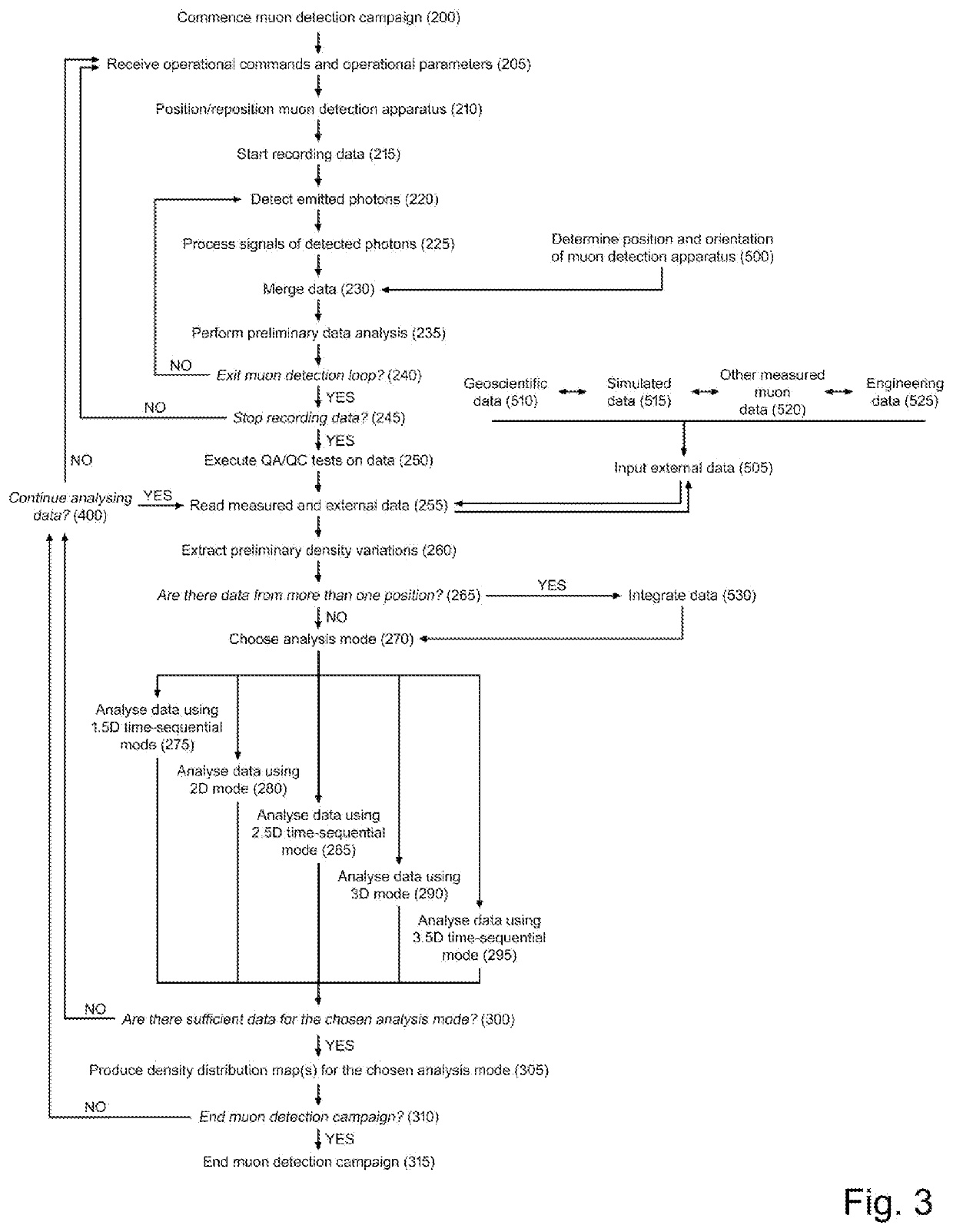System and method for material density distribution survey based on cosmic muon detection
a technology of cosmic radiation and density distribution, applied in the field of material density investigation based on cosmic radiation muon detection, can solve the problems of limiting the accuracy of density surveys, not being able to determine the density variation of natural materials, and lack of directional (angular) sensitivity in many density measurement techniques
- Summary
- Abstract
- Description
- Claims
- Application Information
AI Technical Summary
Benefits of technology
Problems solved by technology
Method used
Image
Examples
Embodiment Construction
[0078]The embodiments in the following detailed description of the muon detection system 100 and the invention as a whole are examples only. Hence someone skilled in the art can implement the basic idea of the invention also in some other manner than that explained in the description. Most embodiments can be actualised in a variety of combinations with other embodiments. Most embodiments may also contain a number of connected advantageous auxiliaries, or no such auxiliaries at all. Though the description may refer to a certain embodiment or embodiments in several places, this does not imply that the reference is directed towards only one described embodiment or that the described characteristic is usable only in one described embodiment. The individual characteristics of a plurality of embodiments may be combined and new embodiments of the invention may thus be provided.
[0079]In order to assist to fully understand the invention, the presented exemplary embodiments and detailed descr...
PUM
 Login to View More
Login to View More Abstract
Description
Claims
Application Information
 Login to View More
Login to View More - R&D
- Intellectual Property
- Life Sciences
- Materials
- Tech Scout
- Unparalleled Data Quality
- Higher Quality Content
- 60% Fewer Hallucinations
Browse by: Latest US Patents, China's latest patents, Technical Efficacy Thesaurus, Application Domain, Technology Topic, Popular Technical Reports.
© 2025 PatSnap. All rights reserved.Legal|Privacy policy|Modern Slavery Act Transparency Statement|Sitemap|About US| Contact US: help@patsnap.com



